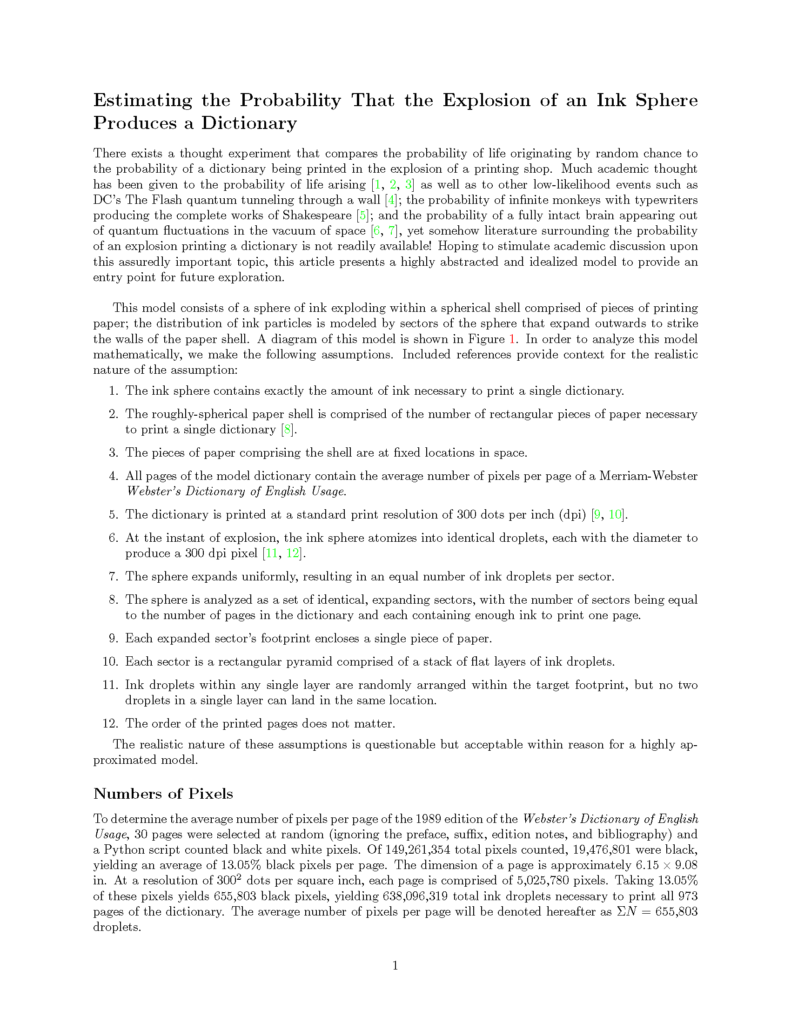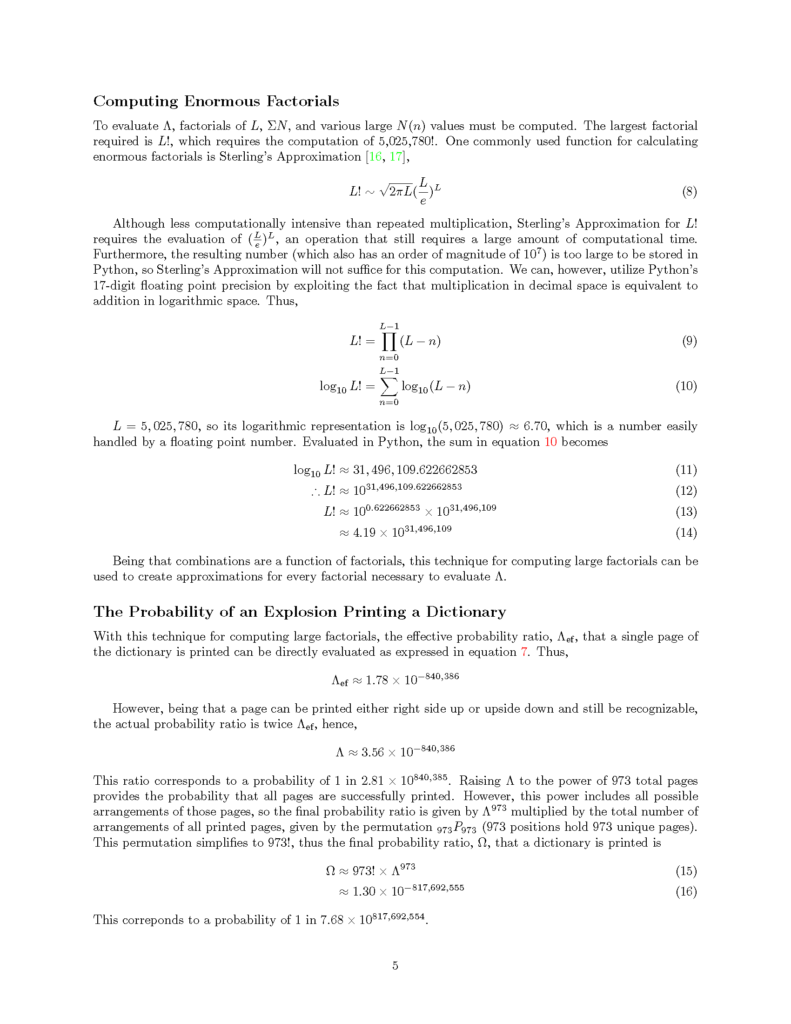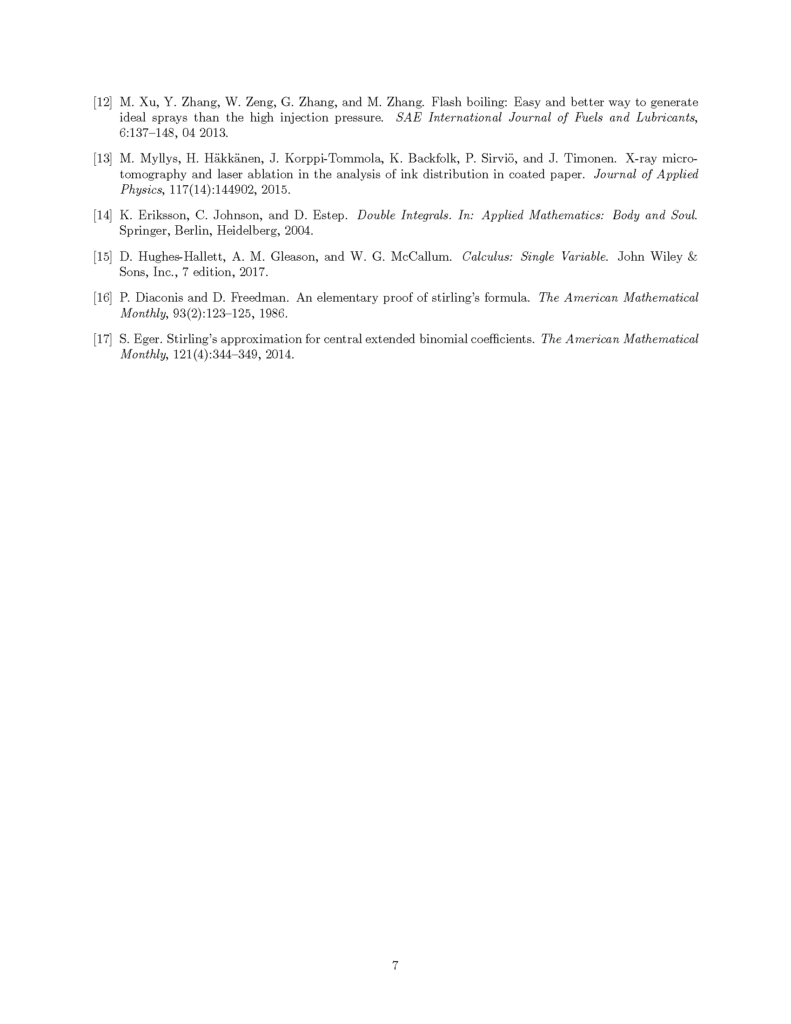Estimating the Probability That an Explosion of Ink Prints a Dictionary
Braden Oh
A few years ago, I heard someone compare the probability of life originating by random chance to the probability of a dictionary being printed in the explosion of a printing shop. The numbers that person was using were clearly made up, but I still wondered – what are the odds? It turns out that quite a bit of scientific thought has been put towards calculating the probability of life arising [1-3] as well as calculating the probability of other highly unlikely events. These include the probability of The Flash quantum tunneling through a wall [4], a monkey with a typewriter producing the works of Shakespeare [5], and a fully intact brain appearing out of quantum fluctuations in the vacuum of space [6-7]. Yet somehow, no scientific thought has been given to the odds of an explosion in a print shop creating a dictionary. That seemed to me to be a great tragedy!
To construct a solid starting point for future researchers, I imagined a highly simplified abstraction of the print factory thought experiment: a sphere of ink explodes within a spherical shell composed of pieces of printing paper; the sphere contains exactly enough ink to print one copy of the 1989 Merriam-Webster English dictionary, and at the instant of the explosion, the sphere atomizes into droplets sized to print 300 dpi pixels.
The ink-sphere abstraction allows us to model the ink sphere as a sum of sectors. Each sector is a rectangular pyramid that contains enough ink to print one page of the dictionary. During the explosion a pyramid expands outwardly until its footprint perfectly covers a target piece of paper. A diagram of this is shown in Figure 1.
Figure 1: A sphere of ink modeled as a sum of pyramidal sectors explodes inside a shell of printing paper
The sector abstraction allows us to model each pyramid as a stack of discrete sheets of ink droplets: the volume of a pyramidal sector is given by a 3D Riemann sum, and we can count the number of ink droplets directly!
The possible arrangements of these droplets are modeled by combinations and permutations that require the evaluation of enormous factorials to solve (e.g., 5,025,780!). These factorials are too difficult for a computer to evaluate by multiplication (even using tricks such as Stirling’s approximation) due to limitations in compute time, memory, and decimal precision. I bypassed this problem by performing all of my computations in log space (since multiplication in linear space is addition in log space) with Python 3.8.5 floats, which have 17 decimal places of precision. At the scale which emerged from these factorials my error was objectively enormous, yet it was still 15 orders of magnitude below 1%.
Using this model, I found the probability of a dictionary being printed to be 1.30×10-817,692,555, or on the order of 10-10^9. More conventionally, this can be expressed as 1 in 7.68×10817,692,554 (that is 7.68 followed by over 817 million zeroes) Numbers at this order of magnitude are absurd to describe; for instance, 1010^9 is much, much larger than a googol, but much, much smaller than a googolplex.
To compare this probability to other unlikely events, the reported probability of The Flash quantum tunneling through a solid wall is approximately 10-10^28 [4], while the probability of a monkey randomly typing the complete works of Shakespeare is approximately 10-10^7.15 [6]. Hence, in a world where The Flash runs at a wall, a monkey has a typewriter, and spheres of ink are exploded, a dictionary will be printed well after the monkey types Shakespeare, but long before The Flash runs through the wall. However, the universe will end many times over before any of these unlikely events occur.
I’ve shown my work in a full writeup available on the Frankly Speaking website. I’ve also composed a technical paper which has been rejected by over half a dozen journals. Do you have a suggestion for where I can send it next? If not, I intend on publishing at SIGBOVIK 2023 this coming April.
[1] A. Loeb, et al. “Relative likelihood for life as a function of cosmic time.” 2016.
[2] D. Kipping. “An objective bayesian analysis of life’s early start and our late arrival.” 2020.
[3] C. Scharf, and L. Cronin. “Quantifying the origins of life on a planetary scale.” 2016.
[4] A. Alam, et al. “The flash and quantum tunnelling.” 2016.
[5] E. R. Weaver. “An exercise in probability.” 1965.
[6] C. Kittel and H. Kroemer. “Thermal Physics.” 1980.
[7] D. Page. “Return of the boltzmann brains.” 2006.
Full Paper:






